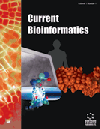- Home
- A-Z Publications
- Current Bioinformatics
- Previous Issues
- Volume 18, Issue 7, 2023
Current Bioinformatics - Volume 18, Issue 7, 2023
Volume 18, Issue 7, 2023
-
-
Convolutional Neural Networks: A Promising Deep Learning Architecture for Biological Sequence Analysis
More LessAuthors: Chinju John, Jayakrushna Sahoo, Manu Madhavan and Oommen K. MathewThe deep learning arena explores new dimensions once considered impossible to human intelligence. Recently, it has taken footsteps in the biological data world to deal with the diverse patterns of data derived from biomolecules. The convolutional neural networks, one of the most employed and persuasive deep learning architectures, can unravel the sequestered truths from these data, especially from the biologic Read More
-
-
-
Advances in Peptide/Protein Structure Prediction Tools and their Relevance for Structural Biology in the Last Decade
More LessPeptides and proteins are involved in several biological processes at a molecular level. In this context, three-dimensional structure characterization and determination of peptides and proteins have helped researchers unravel the chemical and biological role of these macromolecules. Over 50 years, peptide and protein structures have been determined by experimental methods, including nuclear magnetic resonance (NMR), X- Read More
-
-
-
Machine Learning Applications in the Study of Parkinson’s Disease: A Systematic Review
More LessBackground: Parkinson’s disease is a common neurodegenerative disorder that has been studied from multiple perspectives using several data modalities. Given the size and complexity of these data, machine learning emerged as a useful approach to analyze them for different purposes. These methods have been successfully applied in a broad range of applications, including the diagnosis of Parkinson’s disease or the ass Read More
-
-
-
EpiSemble: A Novel Ensemble-based Machine-learning Framework for Prediction of DNA N6-methyladenine Sites Using Hybrid Features Selection Approach for Crops
More LessAuthors: Dipro Sinha, Tanwy Dasmandal, Md Yeasin, Dwijesh C. Mishra, Anil Rai and Sunil ArchakAim: The study aimed to develop a robust and more precise 6mA methylation prediction tool that assists researchers in studying the epigenetic behaviour of crop plants. Background: N6-methyladenine (6mA) is one of the predominant epigenetic modifications involved in a variety of biological processes in all three kingdoms of life. While in vitro approaches are more precise in detecting epigenetic alterations, they are Read More
-
-
-
Survival Prediction of Esophageal Squamous Cell Carcinoma Based on the Prognostic Index and Sparrow Search Algorithm-Support Vector Machine
More LessAuthors: Yanfeng Wang, Wenhao Zhang, Yuli Yang, Junwei Sun and Lidong WangAim: Esophageal squamous cell carcinoma (ESCC) is one of the highest incidence and mortality cancers in the world, and recent studies show that the incidence of ESCC is on the rise, and the mortality rate remains high. An effective survival prediction model can assist physicians in treatment decisions and improve the quality of patient survival. Introduction: In this study, ESCC prognostic index and survival prediction model bas Read More
-
-
-
Predicting Herb-disease Associations Through Graph Convolutional Network
More LessAuthors: Xuan Hu, You Lu, Geng Tian, Pingping Bing, Bing Wang and Binsheng HeBackground: In recent years, herbs have become very popular worldwide as a form of complementary and alternative medicine (CAM). However, there are many types of herbs and diseases, whose associations are impossible to be fully revealed. Identifying new therapeutic indications of herbs, that is drug repositioning, is a critical supplement for new drug development. Considering that exploring the associations between Read More
-
Volumes & issues
-
Volume 20 (2025)
-
Volume 19 (2024)
-
Volume 18 (2023)
-
Volume 17 (2022)
-
Volume 16 (2021)
-
Volume 15 (2020)
-
Volume 14 (2019)
-
Volume 13 (2018)
-
Volume 12 (2017)
-
Volume 11 (2016)
-
Volume 10 (2015)
-
Volume 9 (2014)
-
Volume 8 (2013)
-
Volume 7 (2012)
-
Volume 6 (2011)
-
Volume 5 (2010)
-
Volume 4 (2009)
-
Volume 3 (2008)
-
Volume 2 (2007)
-
Volume 1 (2006)
Most Read This Month
Article
content/journals/cbio
Journal
10
5
false
en


